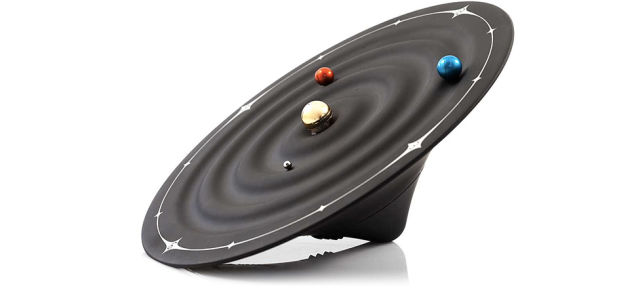
We usually measure the time it takes for a planet in our solar system to orbit the sun in months and years. But given the compact scale of this desktop solar system, the anodized aluminium balls can instead be used to measure seconds, minutes, and hours.
The balls appear to magically circle the central gold sphere without any apparent forces acting upon them. But like with our own solar system, it’s what you don’t see that’s keeping everything running. Inside the $33 clock’s housing is a set of moving magnets that drag the balls around on the surface.
via Gizmodo





